
Shirakawa-go: A Timeless Japanese Village
Discover the timeless beauty of Shirakawa-go, a UNESCO World Heritage site featuring unique gassho-zukuri farmhouses amidst the stunning Japanese Alps.
Nestled in the heart of the Japanese Alps, Shirakawa-go is a UNESCO World Heritage site known for its traditional gassho-zukuri farmhouses. These structures, with their steep thatched roofs, were designed to withstand heavy snowfall and are unique to this region. Visiting Shirakawa-go is like stepping back in time, offering a glimpse into rural Japanese life that has remained largely unchanged for centuries. The village is particularly enchanting in winter when it is blanketed in snow, creating a picturesque scene straight out of a fairy tale. During the warmer months, the lush green fields and mountains provide a stunning backdrop to the rustic wooden houses. The best way to explore Shirakawa-go is on foot, allowing you to appreciate the intricate details of the architecture and the serene beauty of the landscape. While in Shirakawa-go, don't miss the opportunity to visit the Wada House, the largest gassho-zukuri farmhouse in the village, which is open to the public. Another must-see is the Shirakawa Hachiman Shrine, which offers a peaceful retreat and a chance to experience local religious practices. For a panoramic view of the village, head to the Shiroyama Viewpoint, which is particularly popular during the evening light-up events in winter.
Local tips in Shirakawa-go
- Visit in winter for the magical snow-covered scenery and evening light-up events.
- Wear comfortable shoes as the best way to explore the village is on foot.
- Try local delicacies such as Hida beef and soba noodles at village eateries.
- Book accommodations in advance, especially during peak seasons like winter and cherry blossom time.
- Bring cash as some local shops and restaurants may not accept credit cards.
Shirakawa-go: A Timeless Japanese Village
Nestled in the heart of the Japanese Alps, Shirakawa-go is a UNESCO World Heritage site known for its traditional gassho-zukuri farmhouses. These structures, with their steep thatched roofs, were designed to withstand heavy snowfall and are unique to this region. Visiting Shirakawa-go is like stepping back in time, offering a glimpse into rural Japanese life that has remained largely unchanged for centuries. The village is particularly enchanting in winter when it is blanketed in snow, creating a picturesque scene straight out of a fairy tale. During the warmer months, the lush green fields and mountains provide a stunning backdrop to the rustic wooden houses. The best way to explore Shirakawa-go is on foot, allowing you to appreciate the intricate details of the architecture and the serene beauty of the landscape. While in Shirakawa-go, don't miss the opportunity to visit the Wada House, the largest gassho-zukuri farmhouse in the village, which is open to the public. Another must-see is the Shirakawa Hachiman Shrine, which offers a peaceful retreat and a chance to experience local religious practices. For a panoramic view of the village, head to the Shiroyama Viewpoint, which is particularly popular during the evening light-up events in winter.
When is the best time to go to Shirakawa-go?
Iconic landmarks you can’t miss
Shirakawa-go Gassho-Zukuri Minka-en
Explore the enchanting Shirakawa-go Gassho-Zukuri Minka-en, a UNESCO World Heritage site showcasing traditional Japanese farmhouses in stunning mountain landscapes.

Shirakawago Three Houses
Experience the enchanting Shirakawago Three Houses, a UNESCO World Heritage site showcasing Japan's stunning gassho-zukuri architecture amidst breathtaking landscapes.

Unmissable attractions to see
Fukui Prefectural Dinosaur Museum
Explore the Fukui Prefectural Dinosaur Museum, Japan's premier destination for dinosaur enthusiasts with interactive exhibits and stunning fossil displays.

Takayama Jinya
Explore Takayama Jinya, a historical landmark in Takayama, Gifu, showcasing Japan's rich heritage and stunning traditional architecture.

Hida no Sato Open Air Museum
Explore the enchanting Hida no Sato Open Air Museum, where traditional Japanese architecture and culture come to life amid breathtaking natural beauty.

Nishi Chaya District
Discover the enchanting Nishi Chaya District in Kanazawa: a historic gem filled with traditional teahouses and rich cultural heritage.

Ishiura Shrine
Discover the tranquility of Ishiura Shrine in Kanazawa, a sacred site rich in Japanese culture and spirituality, perfect for peaceful reflection and exploration.

Gyokusenin Maru Garden
Experience the serene beauty and cultural heritage of Gyokusenin Maru Garden, a tranquil oasis in Kanazawa, perfect for relaxation and exploration.

Hida Takayama Retro Museum
Explore the enchanting world of nostalgia at Hida Takayama Retro Museum—where vintage toys and memories come to life in a delightful setting.

Takayama City Museum
Explore Takayama's rich heritage at the Takayama City Museum, showcasing artifacts and traditions that define this picturesque region's culture.

Ninja Weapon Museum
Explore the fascinating world of ninjas at the Ninja Weapon Museum in Kanazawa, showcasing authentic artifacts and interactive exhibits.

Myozenji
Discover tranquility and cultural heritage at Myozenji Temple, a stunning Buddhist sanctuary in the heart of Shirakawa's natural beauty.
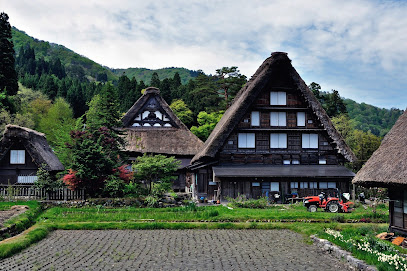
Yoshijima Traditional House
Experience the rich heritage and traditional architecture of Yoshijima Traditional House in Takayama, a historical gem of Gifu Prefecture.

Hida Takayama Museum of Art
Explore the Hida Takayama Museum of Art – a serene cultural gem in Takayama, showcasing exquisite Japanese and international artworks in a beautiful setting.

Hida Earth Wisdom Center
Explore the Hida Earth Wisdom Center in Takayama for an immersive experience in local culture, sustainability, and traditional crafts.
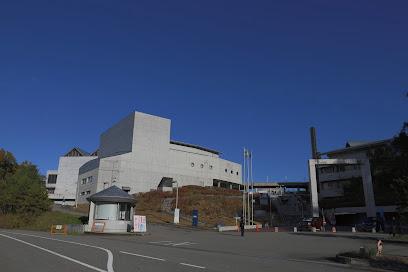
Nezumita-mon Gate
Discover the historical essence of Japan at Nezumita-mon Gate, a stunning entrance to Kanazawa Castle rich in culture and architectural beauty.

Kanazawa Katani
Explore Kanazawa Katani, a charming souvenir store showcasing traditional Japanese crafts and unique treasures from Kanazawa, Japan.

Essential places to dine
Shirakawago Restaurant Irori
Experience authentic Japanese cuisine at Shirakawago Restaurant Irori, nestled in the scenic beauty of Shirakawa-go's heritage village.

Soba Wakimoto
Savor authentic handmade soba noodles in Shirakawa's scenic Ogimachi village, where tradition meets breathtaking views.

Nomura
Experience authentic Japanese soba noodles at Nomura in Shirakawa—where tradition meets flavor in every bowl.

忠兵衛
Discover the essence of Japanese cuisine at 忠兵衛, where traditional soba noodles meet authentic regional flavors in picturesque Shirakawa.

Hiiragi
Experience authentic Japanese cuisine at Hiiragi in Shirakawa - where tradition meets taste amidst stunning natural beauty.

Hakusuien
Experience authentic Japanese dining at Hakusuien in Shirakawa – where tradition meets taste in every dish.

Keyaki
Discover authentic Japanese cuisine at Keyaki in Shirakawa-go—where tradition meets flavor in a breathtaking setting.

Masuzono Bunsuke
Experience authentic Japanese dining at Masuzono Bunsuke in Shirakawa – where tradition meets taste.

Kita no Sho
Discover authentic Japanese cuisine at Kita no Sho in Shirakawa—where tradition meets flavor in every dish.

Tanaka-ya
Experience the essence of Japan at Tanaka-ya, where handmade soba noodles meet breathtaking views in Shirakawa-go.

Shiraogi
Discover authentic teishoku dining at Shiraogi in Shirakawa - where every meal tells a story steeped in tradition.

Gassho
Experience authentic Japanese cuisine at Gassho in Shirakawa - where tradition meets taste in a picturesque setting.

Morizen
Experience authentic Japanese flavors at Morizen in Shirakawa – where tradition meets taste amidst stunning landscapes.

Tenshukaku
Discover authentic Japanese flavors at Tenshukaku in Shirakawa—where culinary tradition meets stunning mountain views.

Arai
Experience authentic Japanese cuisine at Arai in Shirakawa, where traditional dishes meet stunning cultural heritage.
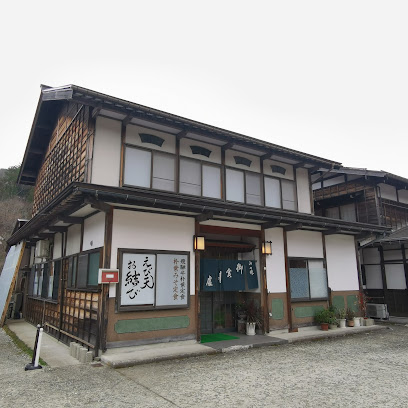
Markets, malls and hidden boutiques
Ochuudo
Discover Ochuudo, the perfect café retreat in Shirakawa-go, offering exquisite coffee and traditional sweets amidst stunning mountain views.

Coffee Shop Hina
Discover the serene charm of Coffee Shop Hina in Shirakawa, where exquisite coffee meets breathtaking views of traditional Japanese landscapes.

Shirakawago Purin no Ie (Pudding House)
Experience the sweetness of Shirakawa-go at Purin no Ie, renowned for its delicious puddings and delightful desserts in a charming café setting.

”Kyoshu” Traditional Coffee Shop
Experience authentic Japanese coffee culture at Kyoshu Traditional Coffee Shop in scenic Shirakawa-go, a UNESCO World Heritage site.

Kondou Shoten
Discover authentic Japanese liquors at Kondou Shoten in Shirakawa, a treasure trove of local sake and spirits.

ZEN
Experience the authentic tastes of Japan at ZEN, a Japanese delicatessen in Shirakawa, where traditional cuisine meets serene ambiance.

Daily Yamazaki Shirakawamura Shirakawago Store
Experience the charm and convenience of Daily Yamazaki in the heart of Shirakawa-go, a UNESCO World Heritage site.

Kataribe
Explore Kataribe Souvenir Store in Shirakawa for authentic Japanese crafts and unique gifts that embody the spirit of traditional culture.
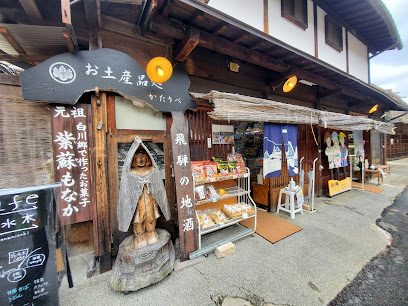
Mamekichi Honpo Shirakawago
Explore Mamekichi Honpo Shirakawago, a quaint souvenir store in Shirakawa-go, showcasing local crafts and delicious treats steeped in tradition.

白川郷特産品直売所 長助
Discover unique handcrafted souvenirs and local delicacies at Nagasuke Souvenir Shop in Shirakawa-go, a treasure trove of culture and craftsmanship.

Kobikiya
Explore Kobikiya in Shirakawa-go for unique souvenirs and a glimpse into Japan's rich cultural heritage.

Kodaijin Souvenir Store
Explore Kodaijin Souvenir Store in Shirakawa for unique Japanese treasures and cultural keepsakes to commemorate your travels.

Ebisu-ya
Discover authentic Japanese souvenirs at Ebisu-ya in Shirakawa-go, a treasure trove of local crafts and traditional gifts.

白川郷あいす工房与ぜ
Discover the charm of Shirakawa-go with unique ice cream flavors made from local ingredients in a picturesque setting.

Oishinbo
Discover unique souvenirs and local delicacies at Oishinbo in the enchanting Shirakawa-go, a UNESCO World Heritage site.

Essential bars & hidden hideouts
Shiroyama Tenshukaku Observation Deck
Explore the stunning vistas of Shirakawa from the Shiroyama Tenshukaku Observation Deck, a must-see tourist attraction in Japan.

Shirakawago Restaurant Irori
Experience the best of Gifu's culinary delights at Irori Restaurant in Shirakawago, where tradition meets exquisite taste.

Tenkara, Shirakawa
Discover the exquisite flavors of authentic Yakiniku at Tenkara, Shirakawa, where quality meets tradition in a picturesque setting.
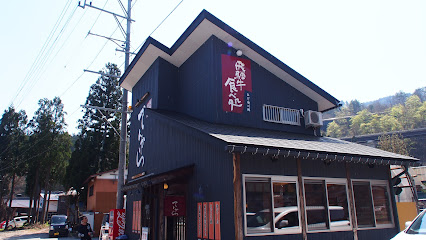
Yamakoshi
Experience the authentic taste of Japan at Yamakoshi, a charming soba noodle shop in Shirakawa, where tradition meets flavor.

Hakusuien
Discover the flavors of Japan at Hakusuien, a casual restaurant in Shirakawa that serves authentic teishoku meals in a welcoming atmosphere.
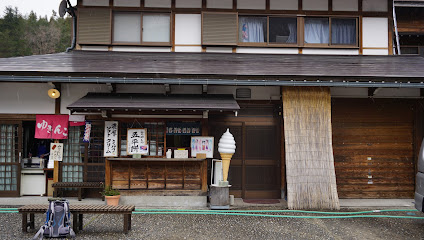
Shiroyamakan
Experience the essence of Japan at Shiroyamakan, a traditional inn offering authentic cuisine and stunning views in Shirakawa.

Masuzono Bunsuke
Experience authentic Japanese flavors at Masuzono Bunsuke in Shirakawa, where traditional dining meets stunning cultural heritage.

Kita no Sho
Discover authentic Japanese cuisine in the heart of Shirakawa at Kita no Sho, a delightful restaurant and souvenir shop that showcases local flavors and crafts.

Tanaka-ya
Experience the authentic flavors of Japan at Tanaka-ya, Shirakawa-go's beloved soba noodle shop, nestled in a stunning traditional village.

Shiraogi
Discover the authentic flavors of Japan at Shiraogi, a charming restaurant in Shirakawa offering traditional Syokudo and Teishoku meals.

Gassho
Discover the flavors of Japan at Gassho, a charming restaurant in Ogimachi offering traditional dishes in a stunning setting.

Tenshukaku
Discover the flavors of traditional Japanese cuisine at Tenshukaku, nestled in the scenic village of Shirakawa, Gifu Prefecture.

Yamamotoya
Discover the authentic taste of handmade soba noodles at Yamamotoya in the scenic Shirakawa village, a true culinary gem of Japan.

Soba dojo Restaurant
Discover the authentic flavors of Japanese soba noodles at Soba Dojo Restaurant in the heart of Shirakawa's picturesque landscapes.

Koshiyama
Discover Koshiyama in Shirakawa for authentic soba noodles and unique antiques, a perfect blend of culinary delight and cultural charm.

Local Phrases about Shirakawa-go
-
- Helloこんにちは
[Kon'nichiwa] - Goodbyeさようなら
[Sayōnara] - Yesはい
[Hai] - Noいいえ
[Īe] - Please/You're welcomeどうぞ
[Dōzo] - Thank youありがとうございました
[Arigatōgozaimashita] - Excuse me/Sorryすみません
[Sumimasen] - How are you?お元気ですか?
[Ogenki desu ka?] - Fine. And you?元気です。あなたは?
[Genki desu. Anata wa?] - Do you speak English?英語を話せますか?
[Eigo o hanasemasu ka?] - I don't understandわかりません
[Wakarimasen]
- Helloこんにちは
-
- I'd like to see the menu, pleaseメニューを見せてください
[Menyū o misete kudasai] - I don't eat meat肉は食べません
[Niku wa tabemasen] - Cheers!乾杯!
[Kanpai!] - I would like to pay, pleaseお会計をお願いします
[Okaikei o onegaishimasu]
- I'd like to see the menu, pleaseメニューを見せてください
-
- Help!助けて!
[Tasukete!] - Go away!去ってください!
[Satte kudasai!] - Call the Police!警察を呼んで!
[Keisatsu o yonde!] - Call a doctor!医者を呼んで!
[Isha o yonde!] - I'm lost道に迷っています
[Michi ni mayotte imasu] - I'm ill具合が悪いです
[Guai ga warui desu]
- Help!助けて!
-
- I'd like to buy...買いたいです...
[Kaitai desu...] - I'm just looking見ているだけです
[Mite iru dake desu] - How much is it?いくらですか?
[Ikura desu ka?] - That's too expensiveそれは高すぎます
[Sore wa takasugimasu] - Can you lower the price?値段を下げてもらえますか?
[Nedan o sagete moraemasu ka?]
- I'd like to buy...買いたいです...
-
- What time is it?今何時ですか?
[Ima nanji desu ka?] - It's one o'clock一時です
[Ichiji desu] - Half past (10)十時半です
[Jūji han desu] - Morning朝
[Asa] - Afternoon午後
[Gogo] - Evening夕方
[Yūgata] - Yesterday昨日
[Kinō] - Today今日
[Kyō] - Tomorrow明日
[Ashita] - 1一
[Ichi] - 2二
[Ni] - 3三
[San] - 4四
[Yon] - 5五
[Go] - 6六
[Roku] - 7七
[Nana] - 8八
[Hachi] - 9九
[Kyū] - 10十
[Jū]
- What time is it?今何時ですか?
-
- Where's a/the...?...はどこですか?
[... wa doko desu ka?] - What's the address?住所は何ですか?
[Jūsho wa nan desu ka?] - Can you show me (on the map)?地図で見せてもらえますか?
[Chizu de misete moraemasu ka?] - When's the next (bus)?次のバスはいつですか?
[Tsugi no basu wa itsu desu ka?] - A ticket (to ....)チケット(... まで)
[Chiketto (... made)]
- Where's a/the...?...はどこですか?
History of Shirakawa-go
-
Nestled in the remote mountains of Gifu Prefecture, Shirakawa-go is a UNESCO World Heritage site renowned for its traditional gassho-zukuri farmhouses. The term 'gassho-zukuri' translates to 'constructed like hands in prayer,' referencing the steep, thatched roofs that resemble the hands of Buddhist monks pressed together in prayer. These roofs are designed to withstand heavy snowfall, a common occurrence in the region.
-
Evidence suggests that the area around Shirakawa-go has been inhabited since the Jomon Period (approximately 14,000–300 BCE). Archaeological finds, such as pottery and stone tools, indicate that early settlers engaged in hunting, fishing, and gathering, living in harmony with the natural environment.
-
During the Heian Period (794–1185), Shirakawa-go saw the establishment of small villages. The isolation of the region provided a refuge for clans and families seeking to escape the political turmoil of the time. The community's self-sufficient lifestyle began to take shape during this era, including early forms of the gassho-zukuri architecture.
-
In the Sengoku Period (1467–1603), Japan was engulfed in civil war and feudal conflict. Shirakawa-go's mountainous terrain offered natural protection, allowing its inhabitants to avoid much of the violence. However, the community was not entirely isolated from the period's unrest, as it occasionally served as a strategic hideout for samurai and ronin.
-
The Edo Period (1603–1868) marked a time of relative peace and stability, allowing Shirakawa-go to thrive economically. The village became famous for its production of gunpowder, which was in high demand. The local economy also benefited from sericulture, the cultivation of silkworms for silk production. The distinctive gassho-zukuri homes were designed to accommodate both human inhabitants and the silkworms.
-
The Meiji Restoration in 1868 brought about significant changes in Japan, including the modernization of the country. However, Shirakawa-go remained largely untouched by these transformations due to its remote location. The traditional lifestyle and architecture of the village were preserved, offering a glimpse into Japan's past.
-
During World War II, Shirakawa-go continued to maintain its traditional ways, though the war brought hardships like food shortages. In the post-war era, the village faced challenges such as depopulation as younger generations moved to urban areas. Efforts to preserve the cultural heritage of Shirakawa-go began to gain momentum during this time.
-
In 1995, Shirakawa-go, along with the neighboring village of Gokayama, was designated a UNESCO World Heritage site. This recognition highlighted the unique cultural and historical value of the gassho-zukuri farmhouses and helped to boost tourism. Preservation efforts have since intensified, ensuring that the village's heritage is maintained for future generations.
-
Shirakawa-go is home to various cultural festivals that celebrate its rich history and traditions. One of the most notable is the Doburoku Festival, held every October, where locals offer homemade sake to the gods for a bountiful harvest. The festival features traditional music, dance, and rituals, providing visitors with an immersive cultural experience.
-
Today, Shirakawa-go is a popular tourist destination that attracts visitors from around the world. While tourism has brought economic benefits, it also poses challenges for the preservation of the village's cultural heritage. Local authorities and residents continue to work together to balance tourism with the need to maintain the traditional lifestyle and architecture that make Shirakawa-go unique.
Shirakawa-go Essentials
-
Shirakawa-go is located in Gifu Prefecture, Japan. The easiest way to reach Shirakawa-go is by bus. From Tokyo, you can take the Hokuriku Shinkansen to Kanazawa Station, and then transfer to a Nohi Bus or Hokutetsu Bus that will take you directly to Shirakawa-go. Alternatively, you can travel from Nagoya to Takayama by JR Hida Limited Express, and then take a Nohi Bus from Takayama to Shirakawa-go. The bus ride offers scenic views and takes around 50 minutes from Takayama and 75 minutes from Kanazawa.
-
Once in Shirakawa-go, the best way to explore the village is on foot. The area is relatively small, and most attractions are within walking distance. For those who prefer not to walk, local taxis are available but can be limited. Bicycles can also be rented from some accommodations and rental shops, which is a convenient way to get around and enjoy the beautiful scenery.
-
The official currency in Japan is the Japanese Yen (JPY). While credit cards are accepted in some hotels, restaurants, and souvenir shops in Shirakawa-go, it is advisable to carry cash, especially when shopping at smaller establishments and local markets. ATMs are available but may not always accept foreign cards, so it is wise to withdraw sufficient cash beforehand in larger cities like Tokyo, Nagoya, or Kanazawa.
-
Shirakawa-go is generally a very safe destination for tourists. Crime rates are low, and the local community is welcoming. However, it is always advisable to take standard precautions such as not leaving belongings unattended and being aware of your surroundings. There are no specific high-crime areas targeting tourists, but it is recommended to stay vigilant, especially during crowded events or festivals.
-
In case of an emergency while in Shirakawa-go, dial 110 for police assistance and 119 for fire or medical emergencies. It is recommended to have travel insurance that covers medical emergencies. The nearest hospital is in Takayama, which is about an hour away by bus. For minor health issues, there are small clinics and pharmacies in the village where you can purchase over-the-counter medications.
-
Fashion: Do dress comfortably and modestly, especially when visiting religious sites. Avoid wearing overly revealing clothing. Religion: Do respect local customs and traditions. When visiting temples or shrines, remove your shoes and refrain from taking photos where prohibited. Public Transport: Do be punctual and respectful. Keep noise to a minimum and do not eat or drink on buses. Greetings: Do greet people with a slight bow and a friendly smile. Shaking hands is less common but acceptable. Eating & Drinking: Do try local delicacies such as Hida beef and soba noodles. Always say 'Itadakimasu' before eating and 'Gochisousama' after finishing your meal. Don't leave food uneaten, as it is considered wasteful.
-
To experience Shirakawa-go like a local, consider staying overnight in one of the traditional gassho-zukuri farmhouses, many of which operate as minshuku (family-run inns). Participate in local festivals such as the Shirakawa-go Winter Light-Up, where the village is beautifully illuminated. Engage with locals by visiting the morning markets and trying your hand at traditional crafts. Don't miss the observation deck at Shiroyama Viewpoint for a panoramic view of the entire village. Also, enjoy a relaxing soak in the nearby hot springs, which are a cherished part of local culture.
Nearby Cities to Shirakawa-go
-
Things To Do in Nagoya
-
Things To Do in Kyoto
-
Things To Do in Nara
-
Things To Do in Osaka
-
Things To Do in Tokyo
-
Things To Do in Hiroshima
-
Things To Do in Fukuoka
-
Things To Do in Pohang
-
Things To Do in Gyeongju
-
Things To Do in Ulsan
-
Things To Do in Busan
-
Things To Do in Andong
-
Things To Do in Daegu
-
Things To Do in Chuncheon
-
Things To Do in Sapporo








